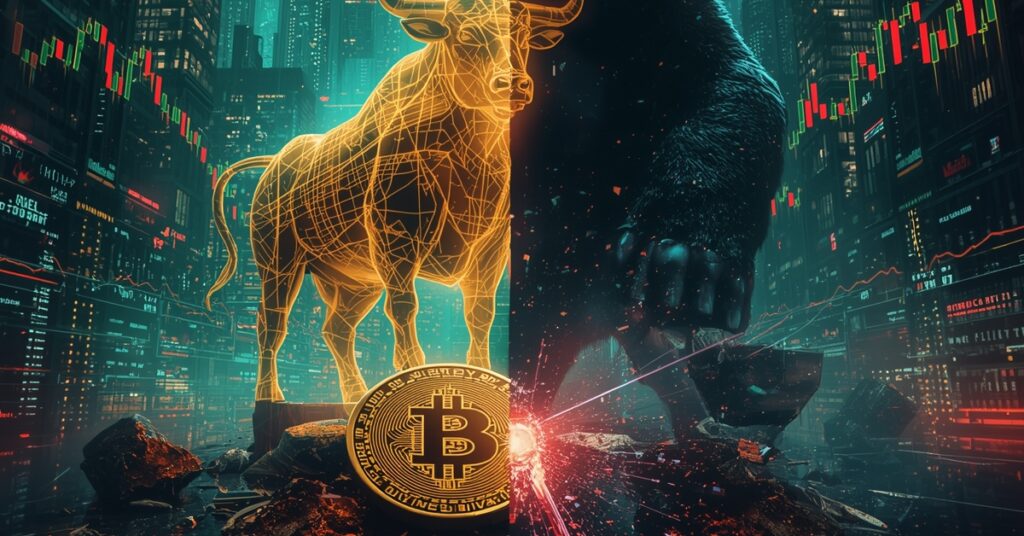Analysts are split as global money supply hits record highs. Some see Bitcoin surging to $250K, others call it pure hype. Is liquidity the real driver or just a distraction?
There’s a lot of noise in the crypto world right now — and no, it’s not just about ETFs or memecoins this time. The buzz? Money supply. Yep, that thing central banks keep printing like there’s no tomorrow.
Some analysts think this tsunami of cash could be the fuel that sends Bitcoin skyrocketing. Others? Not so convinced. So what’s really going on?
More Money, More Bitcoin? Maybe…
The theory is simple. When central banks flood the system with money, it eventually trickles down into high-risk assets — like crypto. It’s happened before. Could it happen again?
Crypto YouTuber Lark Davis certainly thinks so. On Monday, he pointed out that Bitcoin price movements are syncing up with the 100-day offset of M2 money supply — a key measure of how much cash is sloshing around in the system.
According to him, a “parabolic move” is just around the corner. His bold prediction? BTC could hit $250,000 in the next few months.
Exciting? Definitely. Realistic? Well…
There’s a catch — Bitcoin is currently lagging behind the M2 money supply’s growth, which actually isn’t unusual. Historically, Bitcoin tends to react to money supply changes with a delay, especially on longer time frames.
Read Also: Musk Hype Sends “America Party” Token Soaring 420%—But Is It All Just a Meme Scam?
America’s Printing Press Is Back In Action
Here’s where things get interesting.
According to Global Markets Investor, the U.S. money supply is surging again. In May, M2 rose 4.5% year-over-year, hitting a record $21.94 trillion. Fast forward to July? It probably crossed $22 trillion already.
And if this trend continues for the next decade, we’re looking at a doubling of the money supply. That’s no small deal.
Let’s not forget — since March 2020, when the pandemic pushed economies to the brink, the U.S. has printed around 37% more money. It’s one of the biggest expansions in modern history.
It’s Not Just the U.S. — The Whole World’s at It
Globally, money supply is now at a record-breaking $93.7 trillion, growing at an annual rate of 7.45%. This number includes cash from the four monetary giants — the Federal Reserve, European Central Bank, Bank of Japan, and the People’s Bank of China.
Crypto analyst Crypto Auris believes this global flood of liquidity could push Bitcoin even higher. His target? Around $170,000, if the flow continues.
Read Also: Solo Bitcoin Miner Strikes Gold, Nets $349K, With a Surprisingly Modest Rig
But Then Came Politics… and a Pullback
Earlier this week, there was hope that Trump’s tariff deadline might end positively — and if it did, analysts expected a bullish run for Bitcoin.
But things didn’t quite go that way.
Instead, the U.S. President sent out letters to several Asian countries — Japan, Korea, Thailand, and Indonesia — who hadn’t made trade deals yet. The result? Crypto markets dipped on Tuesday as uncertainty crept back in.
Wait, Is the correlation even real?
Here’s where the story flips.
On July 7, Protos published a deep dive that debunked the so-called link between money supply (M2) and Bitcoin prices. And their logic? Pretty straightforward.
If you zoom in from 2021 to now, the charts make it look like Bitcoin and M2 are in sync. But if you pull back and zoom from 2019 to now, the connection fades. In fact, M2 was rising two years before Bitcoin made any moves.
Read Also: Ethereum Supply Is Vanishing—Price Boom Next?
Even crazier — M2 hit new highs in November 2022, right around when Bitcoin was crashing thanks to the FTX collapse. So… maybe it’s not as connected as people think?
Protos also pointed out that total money supply doesn’t reflect actual liquidity available for buying Bitcoin. It’s just a big number — one that affects the price of everything, not just crypto.
Honestly, it’s a mixed bag
There’s definitely a narrative forming — more money means more fuel for Bitcoin. And yes, liquidity plays a big role in price surges. But at the same time, correlation doesn’t always mean causation.
My take? Keep an eye on the money supply, sure. But don’t base your entire portfolio strategy on it. The crypto market is driven by macro trends, regulation, adoption, and good ol
Disclaimer: This article is for information only. Consult a financial advisor before any investment, and do your own research. Because crypto is unregulated and involves a lot of risk.




